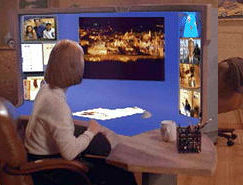
I use Google Docs (mostly spreadsheets) all the time to work on documents collaboratively. This top 20 power tips has some good information, but the best one is about sharing with others:
5. Share docs with non-Google Docs users
Google Docs is all about collaboration, and you can even permit people who don’t have a Google account to view and edit your documents.
To share a file, click the padlock icon alongside the document title at the top left of the window. In the dialog box that appears, select Change alongside the Private entry in the list. In the new dialog box, select either Public on the Web or Anyone with the Link. If you want viewers to be able to edit the document as well as just to see it, put a check next to Allow Anyone to Edit. Then click the Save button, and copy and paste the link into one or more e-mail messages.












